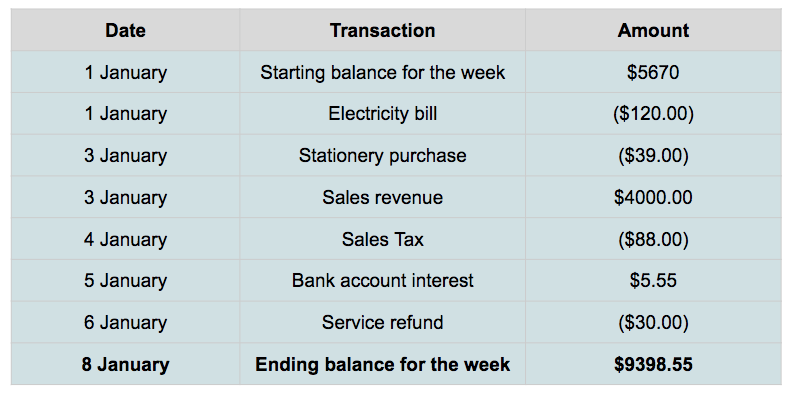Double-entry vs. Single-entry Bookkeeping
A confirmation email has been sent to your email.

When you set up a new business, one of the first things you need to decide is which bookkeeping system to use — double-entry or single-entry.
For non-accountants, it can seem like a tough call to make. Both have pros and cons. Unless you’re already well-versed in bookkeeping and financial management, it can be hard to know which one to choose for your business.
In this discussion, we’ll explain double-entry and single-entry bookkeeping and give you the info you need to decide which one is right for your business.
At Pilot, we have a team of expert bookkeepers using powerful software to eliminate the most error-prone aspects of bookkeeping. If you want to keep better books, Try Pilot Now.
What is Double-entry Bookkeeping?
Double-entry bookkeeping is an accounting system in which all financial transactions are recorded in two types of accounts, debits and credits. When you post a transaction, the number of debits and credits used can be different, but the total dollar amount of debits must equal credits.
You will note these transactions in a section of the business’s General Ledger. In a double-entry statement, you’ll see debits on the left-hand side and credits on the right.
Double-entry bookkeeping makes it easier to detect errors because of the accounting equation it relies upon. This equation states that:
Assets = Liabilities + Equity
Assets represent everything a company owns. Liabilities are everything a company owes. Equity is the owner’s stake, including owner contributions into the company. Imagine, for example, that you sold all of your assets for cash and used the cash to pay off all your liabilities. Any cash left over would be your equity balance. Double-entry bookkeeping keeps this equation balanced.
If the two sides of this equation are out of balance, this is a good sign there’s an error in the books. If bookkeeping errors go undetected, you may be making decisions based on faulty information. That could lead to bounced checks or bank charges further down the road.
Double-entry has been around since the Renaissance era and perhaps even before. It is still the most commonly used accounting method that complies with Generally Accepted Accounting Principles (GAAP).
Benefits
While it’s tempting to make your business set-up easier by opting for single-entry (explained below), double-entry bookkeeping has a lot of advantages:
- Error & fraud identification: Double-entry accounts allow bookkeepers to identify and fix errors quickly. Each transaction must balance total debits and total credits. In fact, most accounting software packages give you an error message if debits and credits are out of balance. When you identify things that aren’t adding up, you can take action right away to fix them and prevent issues in the future.
- Profit and loss: It’s easier for you to identify profit and loss because revenue and expenses transactions are clearly stated.
- Financial statements: When you use double-entry bookkeeping, you can prepare financial statements straight from the books, because all the necessary information is already recorded.
Basically, double-entry provides a 360 degree view of a business’s financial transactions, making financial reporting smoother and operations more transparent.
How to Implement Double-entry Bookkeeping
To implement a double-entry bookkeeping system, you need a Chart of Accounts and five account categories: Asset, Liability, Equity, Income, and Expense. Keep these debit and credit rules in mind:
- A debit entry increases asset and expense accounts.
- A credit entry increases liability, equity, and income accounts.
- The total number of debits and credits can be different in a particular journal entry.
- The total dollar amount of debits and credits must be equal.
Start by recording each journal entry, using the rules listed above.
As you post journal entries, you or your bookkeeper can review the activity by producing a trial balance, which is a listing of each account and the current balance in the account. If everything is going smoothly, the total debits and credits on the trial balance should be equal. Software like QuickBooks can automatically check to see if your books are adding up.
Example

If the person in charge of the books had omitted one of the debit or credit entries from the example above, the total dollar amount of the credits and debits would differ, revealing an error and allowing for correction.
What is Single-entry Bookkeeping?
Single-entry bookkeeping is what you do in your checkbook, recording checks and deposits in one register. For businesses using single-entry, you record income and expenses once, hence the name.
If it sounds a lot simpler than double-entry, that’s because it is. In a single-entry system, you record all transactions in one log. The method doesn’t track assets or liabilities. In fact, businesses running off single-entry only record the date, amount, and name of each transaction. The only stipulation is that the transaction log must contain enough information for tax reporting purposes.
As a bookkeeping method, very few businesses use single-entry. It is sometimes described as an ‘incomplete’ financial system, because it only records one aspect of a business’s financial transactions — inflows and outflows. This makes single-entry much more prone to error and fraud than double-entry. It also reduces transparency and accuracy of financial management.
Benefits
We’ve mentioned quite a few drawbacks of single-entry bookkeeping already, but the method definitely has a big plus, too — simplicity. You don’t need any training or accounting smarts to implement or do single-entry bookkeeping for your own business. All you need is a record of your company’s financial transactions.
You also won’t need to invest in any bookkeeping software or services, as a simple Excel sheet is enough.
How to Implement Single-entry Bookkeeping
The simplest way to do single-entry is to first set up a spreadsheet with three columns: Date, Transaction Description, and Amount.

In the top row, record the starting balance for the period you’re accounting for. Then record each transaction with the date, description, and amount. Parentheses indicate outflows and non-bracketed numbers are inflows. At the end of the accounting period, just calculate the remaining balance.
You can also add a little complexity to this system by introducing two columns, one for revenue and one for expenses. This is still considered to be a single-entry system, because each transaction is only entered once.
Example
Let’s take the example from the image above. The business owner records the starting balance of $5,670 in the top row and records all other transactions as either positive or negative beneath the starting balance.
At the end of the period (in this case, a week), they calculate the total after subtractions and additions.
For argument’s sake, imagine that the business owner slipped up and posted the daily product sales amount as $5,000, instead of the correct $4,000 With single-entry bookkeeping, that error would go unnoticed until a bank statement with an unexpectedly low balance arrived in the mail. In the interim, the business could have been mistakenly spending money it didn’t have.
Double-entry vs. Single-entry: Which Should You Use?
Some businesses, including publicly owned companies, are legally obligated to followGAAP principles. Therefore they have to use the double-entry system. Private companies that use accrual bookkeeping also have to apply double-entry bookkeeping.
Any startup that is considering funding rounds in the future should implement double-entry bookkeeping as soon as possible. Investors will want access to a complete set of financial statements built off professional bookkeeping, and you’ll need to build your pitch deck off of solid financial projections. Single-entry bookkeeping won’t allow you to do that.
On top of that, any business that handles anything other than cash transactions needs to use double-entry bookkeeping. For example, if your business buys or sells on credit, then you need to implement a double-entry system.
Single-entry bookkeeping is an option if:
- You’re a solo-preneur or sole proprietorship.
- You have only cash transactions built off cash-basis accounting.
- You have few physical assets and few employees.
Bear in mind that while you’ll be able to prove income tax reporting and calculate net income, you won’t be able to generate a complete set of financial statements. This will limit your ability to win investments down the road and may lead you to switch accounting systems at some point.
Conclusion
Starting out with double-entry bookkeeping, even when your business is small, is the best long-term plan. Building the structures that support scaling and growth will open up investment opportunities, streamline financial management, and allow you to make wiser financial decisions.
Whichever method you choose, it pays to have a team of expert bookkeepers using powerful software behind you. If you want to keep better books, try Pilot.


